Copier / Coller la règle iLogic ci-dessous :
Private Sub Main()
Dim asmDoc As AssemblyDocument
asmDoc = ThisApplication.ActiveDocument
'Create the Export file (Filename = Assembly Filename + csv)
Dim ExportFile As String = ThisDoc.PathAndFileName(False) & ".csv"
Dim oAppend As System.IO.StreamWriter
oAppend = System.IO.File.CreateText(ExportFile)
oAppend.WriteLine("Position X" & ";" & "Position Y" & ";" & "Position Z" & ";" & "Rotation" & ";" & "Nom Famille" & ";" _
& "Nom Occurrence" & ";" & "Nom Fichier" & ";" & "Titre" & ";" & "Description" & ";" & "Designer" & ";" & "Project")
' Occurence Level Limit (1 = Toplevel only, 2 = 1st Sublevel, ...)
Dim OccLevelLimit As Integer
OccLevelLimit = 1
' Set a list of Properties
Dim oPropList() As String
oPropList = {"Part Number","Title","Description","Designer","Project","OccurrenceName"}
' Call the function that traverses the assembly and Gets the props.
Call GetProp(asmDoc.ComponentDefinition.Occurrences, 0, OccLevelLimit, oAppend, oPropList)
'Display the export file
oAppend.Flush()
oAppend.Close()
ThisDoc.Launch(ExportFile)
End Sub
Private Sub GetProp(Occurrences As ComponentOccurrences, OccLevel As Integer, LevelLimit As Integer, oExportFile As System.IO.StreamWriter, PropertyNames() As String)
' Iterate through each of the occurrences in the collection provided.
Dim Occ As ComponentOccurrence
'Set the Occurence Level
OccLevel = OccLevel + 1
For Each Occ In Occurrences
'Get The Annotation text from the Occurence property Title
Dim oDoc As Inventor.Document
oDoc = Occ.Definition.Document
Dim AnnotationText(PropertyNames.Length) As String
For i = 0 To PropertyNames.Length - 1
'Show the Property Name in addition to the Value eg: Title:<Component Title>
'AnnotationText(i) = PropertyNames(i) & ": " & GetPropertyValue(oDoc.Propertysets,PropertyNames(i))
'Only enter the Property Value
AnnotationText(i) = GetPropertyValue(oDoc.PropertySets,PropertyNames(i))
Next
'Write the Props, Occurence Position, Occurence Rotation and Annotation to the export file
Try
WriteAnnotation(oExportFile, Occ.Name,Occ.ReferencedDocumentDescriptor.DisplayName, AnnotationText, Occ.MassProperties.CenterOfMass, Occ.Transformation.Translation, Occ.Transformation)
Catch
End Try
' If this occurrence is a subassembly, recursively call this
' function to traverse through the subassembly if it is in range of the Level limit
If Occ.DefinitionDocumentType = kAssemblyDocumentObject And OccLevel < LevelLimit Then
Call GetProp(Occ.SubOccurrences, OccLevel, LevelLimit, oExportFile, PropertyNames)
End If
Next
End Sub
Private Sub WriteAnnotation(oWrite As System.IO.StreamWriter, OccName As String, OccFileName As String, Text() As String, Point As Point, Translation As Vector, oTransform As Matrix) 'write to the csv file
'Compute the Occurence Rotation xAngleOffset represents the Inventor occurence rotation in the Z
Dim aRotAngles(2) As Double
Call CalculateRotationAngles(oTransform, aRotAngles)
xAngleOffset = FormatNumber(aRotAngles(2), 3)
'MessageBox.Show("Origin Z Angle = " & xAngleOffset & " deg", "Component Origin Rotation")
'xAngleOffset = Acos(oPartX.DotProduct(oXAxis))*180/PI 'Angular offset between component X-axis and assembly X-axis
'Format the CSV record row entry
'Extracting the occurrence rotation in the Z - this assumes all parts will be parallel to the assembly XY
oWrite.WriteLine((Floor(Translation.X * 10)) & ";" & (Floor(Translation.Y * 10)) & ";" & (Floor(Translation.Z * 10)) & ";" _
& xAngleOffset & ";" & Text(0) & ";" & OccName & ";" _
& OccFileName & ";"& Text(1) & ";" & Text(2) & ";" & Text(3) & ";" & Text(4) & ";")
'Optional code to write the Occurence CoG
'oWrite.WriteLine("<Position x='" & (Point.X * 10) & "' y='" & (Point.Y * 10) & "' z='" & (Point.Z * 10) & "'/>")
End Sub
Private Function GetPropertyValue(oPropSets As PropertySets, PropertyName As String) As String
Dim oPropSet As PropertySet
For Each oPropSet In oPropSets
' Iterate through all the Properties in the current set.
Dim oProp
For Each oProp In oPropSet
' Obtain the Name of the Property
Dim Name As String
Name = oProp.Name
If Name = PropertyName
' Obtain the Value of the Property
Dim Value As String
Value = oProp.Value
Return Value
Exit Function
End If
Next
Next
Return ""
End Function
Sub CalculateRotationAngles( _
ByVal oMatrix As Inventor.Matrix, _
ByRef aRotAngles() As Double)
Const TODEGREES As Double = 180 / PI
Dim dB As Double
Dim dC As Double
Dim dNumer As Double
Dim dDenom As Double
Dim dAcosValue As Double
Dim oRotate As Inventor.Matrix
Dim oAxis As Inventor.Vector
Dim oCenter As Inventor.Point
oRotate = ThisApplication.TransientGeometry.CreateMatrix
oAxis = ThisApplication.TransientGeometry.CreateVector
oCenter = ThisApplication.TransientGeometry.CreatePoint
oCenter.X = 0
oCenter.Y = 0
oCenter.Z = 0
' Choose aRotAngles[0] about x which transforms axes[2] onto the x-z plane
'
dB = oMatrix.Cell(2, 3)
dC = oMatrix.Cell(3, 3)
dNumer = dC
dDenom = Sqrt(dB * dB + dC * dC)
' Make sure we can do the division. If not, then axes[2] is already in the x-z plane
If (Abs(dDenom) <= 0.000001) Then
aRotAngles(0) = 0#
Else
If (dNumer / dDenom >= 1#) Then
dAcosValue = 0#
Else
If (dNumer / dDenom <= -1#) Then
dAcosValue = PI
Else
dAcosValue = Acos(dNumer / dDenom)
End If
End If
aRotAngles(0) = Sign(dB) * dAcosValue
oAxis.X = 1
oAxis.Y = 0
oAxis.Z = 0
Call oRotate.SetToRotation(aRotAngles(0), oAxis, oCenter)
Call oMatrix.PreMultiplyBy(oRotate)
End If
'
' Choose aRotAngles[1] about y which transforms axes[3] onto the z axis
'
If (oMatrix.Cell(3, 3) >= 1#) Then
dAcosValue = 0#
Else
If (oMatrix.Cell(3, 3) <= -1#) Then
dAcosValue = PI
Else
dAcosValue = Acos(oMatrix.Cell(3, 3))
End If
End If
aRotAngles(1) = Sign(-oMatrix.Cell(1, 3)) * dAcosValue
oAxis.X = 0
oAxis.Y = 1
oAxis.Z = 0
Call oRotate.SetToRotation(aRotAngles(1), oAxis, oCenter)
Call oMatrix.PreMultiplyBy(oRotate)
'
' Choose aRotAngles[2] about z which transforms axes[0] onto the x axis
'
If (oMatrix.Cell(1, 1) >= 1#) Then
dAcosValue = 0#
Else
If (oMatrix.Cell(1, 1) <= -1#) Then
dAcosValue = PI
Else
dAcosValue = Acos(oMatrix.Cell(1, 1))
End If
End If
aRotAngles(2) = Sign(-oMatrix.Cell(2, 1)) * dAcosValue
'if you want to get the result in degrees
aRotAngles(0) = aRotAngles(0) * TODEGREES
aRotAngles(1) = aRotAngles(1) * TODEGREES
aRotAngles(2) = aRotAngles(2) * TODEGREES
End Sub
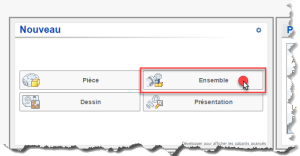
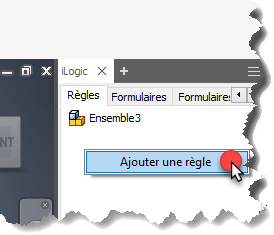
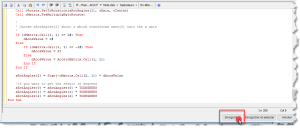
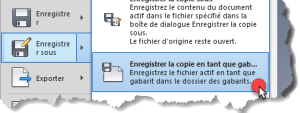
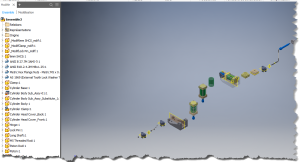
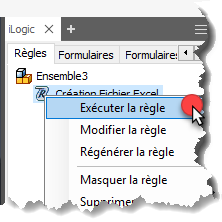
 A bientôt sur le blog Aplicit !
A bientôt sur le blog Aplicit !













Laisser un commentaire